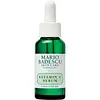What's inside
What's inside
 Key Ingredients
Key Ingredients

 Benefits
Benefits

 Concerns
Concerns

No concerns
 Ingredients Side-by-side
Ingredients Side-by-side

Water
Skin ConditioningTetrahexyldecyl Ascorbate
AntioxidantGlycerin
HumectantPhenoxyethanol
PreservativeCarthamus Tinctorius Seed Oil
MaskingAmmonium Acryloyldimethyltaurate/Vp Copolymer
Dipalmitoyl Hydroxyproline
Skin ConditioningTocopheryl Acetate
AntioxidantTetrasodium Glutamate Diacetate
Carbomer
Emulsion StabilisingPolysorbate 20
EmulsifyingSodium Metabisulfite
AntioxidantPanthenol
Skin ConditioningFerulic Acid
AntimicrobialEthylhexylglycerin
Skin ConditioningSodium Hydroxide
BufferingCamellia Sinensis Leaf Extract
AntimicrobialWater, Tetrahexyldecyl Ascorbate, Glycerin, Phenoxyethanol, Carthamus Tinctorius Seed Oil, Ammonium Acryloyldimethyltaurate/Vp Copolymer, Dipalmitoyl Hydroxyproline, Tocopheryl Acetate, Tetrasodium Glutamate Diacetate, Carbomer, Polysorbate 20, Sodium Metabisulfite, Panthenol, Ferulic Acid, Ethylhexylglycerin, Sodium Hydroxide, Camellia Sinensis Leaf Extract
 Reviews
Reviews

Ingredients Explained
These ingredients are found in both products.
Ingredients higher up in an ingredient list are typically present in a larger amount.
Phenoxyethanol is a preservative that has germicide, antimicrobial, and aromatic properties. Studies show that phenoxyethanol can prevent microbial growth. By itself, it has a scent that is similar to that of a rose.
It's often used in formulations along with Caprylyl Glycol to preserve the shelf life of products.
Water. It's the most common cosmetic ingredient of all. You'll usually see it at the top of ingredient lists, meaning that it makes up the largest part of the product.
So why is it so popular? Water most often acts as a solvent - this means that it helps dissolve other ingredients into the formulation.
You'll also recognize water as that liquid we all need to stay alive. If you see this, drink a glass of water. Stay hydrated!
Learn more about Water